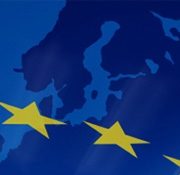The World Intellectual Property Office (WIPO) has published its annual PCT review in August 2018.
For the record, the PCT (Patent Cooperation Treaty) is the international convention that regulates the filing of international patent applications (so-called PCT filings).
You can find the review on the following link:
http://www.wipo.int/edocs/pubdocs/en/wipo_pub_901_2018.pdf
The PCT statistics do not go in the same direction as the rankings of brand values. The ranking tops are Asian then US.
The overall figures for 2018 have not recorded a big improvement.
The number of national phases fell to 615,400 (-1.4%).
The number of new PCT filings reached 243,500 (+ 4.5%).
As for the number of applicants, it reached 52,355 (+ 3%).
The top 10 places are occupied by well known companies:
– 3 Chinese companies (HUAWEI-1ère, ZTE-2e, BOE-7e):
– 2 US companies (INTEL-3e, QUALCOMM -5e);
– 2 Japanese companies (MITSUBISHI-4e, SONY-9e);
– 2 Korean companies (LG-6e, SAMSUNG -9e); and
– 1 Swedish company (ERICSSON-10e).
Classification (number of applications in 2017):
1 HUAWEI TECHNOLOGIES CO., LTD. CN – 4,024;
2 ZTE CORPORATION CN – 2,965;
3 INTEL CORPORATION USA – 2,637;
4 MITSUBISHI ELECTRIC CORPORATION JP – 2,521;
5 QUALCOMM INCORPORATED USA – 2,163;
6 LG ELECTRONICS INC. KR – 1,945;
7 BOE TECHNOLOGY GROUP CO., LTD. CN – 1,818;
8 SAMSUNG ELECTRONICS CO., LTD. KR – 1,757;
9 SONY CORPORATION JP – 1,735;
10 TELEFONAKTIEBOLAGET LM ERICSSON (PUBL) SE – 1 564.
Remarkably, among the GAFAs, there is no record of APPLE and FACEBOOK, which shows that the patent strategy, while important, is not enough in itself to the development of the company. A brand strategy, a communication and marketing strategy are other important tools to implement to increase turnover and market share.
The ranking nevertheless shows an indicator of the most innovative companies.
The first European company is BOSCH (14th), the first French (the only one of the top 50) is MICHELIN (44th). No UK company is in the top 50.
Outstanding highlights: the number of PCT filings broke records in 2017 with said 4.5% increase. As a reminder, apart from a 4.8% drop in 2009, the number of PCT filings is growing every year by around 2 to 5% since 2003, with peaks exceeding 11% in 2005 and 2011.
The number of States Parties to the PCT has increased to 152, with after Djibouti, Cambodia and Kuwait in 2016, the ratification of Jordan in 2017. PCT applications have been filed in 126 countries.
Asia takes the largest share of PCT filings (49.1% in 2017 compared to 27.6% in 2007) with China as a locomotive (50,674 filings).
CEA (FR) stands out as the leading applicant in the government / PRO sector.
Congratulations to Freddy GUEMENI and IMPERIAL INNOVATIONS (UK), who are among the top 50 university applicants with 53 filings (3rd European after OXFORD UNIV INNOVATIONS (75 filings), DANMARKS TEKNISKE UNIVERSITET (54 filings).
As far as the technical fields are concerned, the largest numbers of filings concerns:
1 °) computer technology (19,122 filings, 8.6% of the filings);
2 °) digital communication (18,122 filings, 8.2% of the filings);
3 °) appliances, energy and electrical machinery (15,223 filings, 6.8% of the filings);
4 °) medical technologies (15,024 filings, 6.7% of the filings);
5 °) instrumentation measures (10,082 filings, 4.5% of the filings);
6 °) transport (9,753 filings, 4.4% of the filings);
7 °) pharmacy (8,750 filings, 3.9% of the filings);
8 °) audiovisual technologies (7,520 filings, 3.9% of the filings);
9 °) optics (10,082 filings, 3.2% of the filings); and
10 °) biotechnologies (6,545 filings, 2.9% of the filings).
The report shows that progress continues to move forward, even though Europe is lagging behind the US and Asia.
SOPERYAH IP



